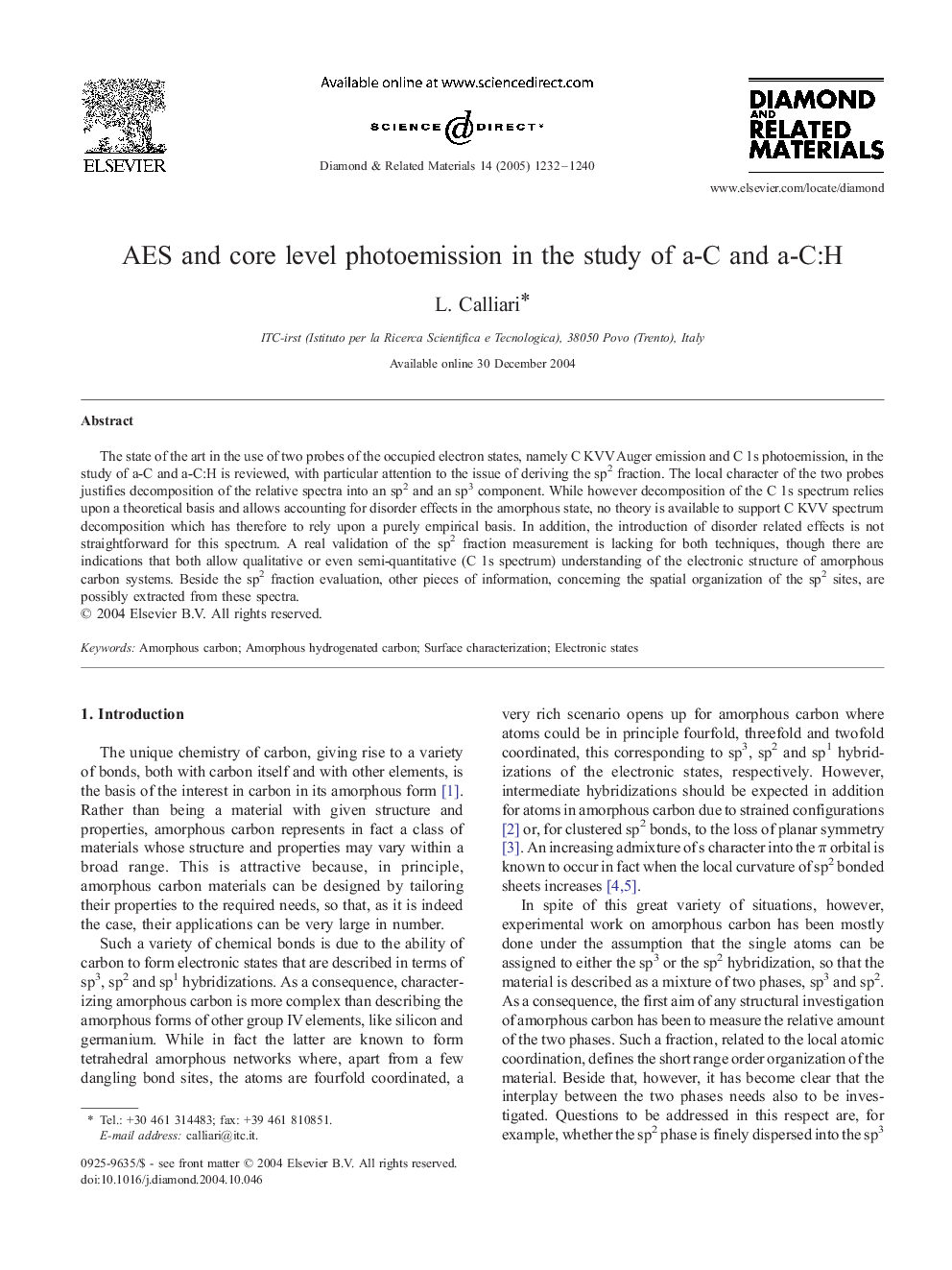| Article ID | Journal | Published Year | Pages | File Type |
|---|---|---|---|---|
| 10401005 | Diamond and Related Materials | 2005 | 9 Pages |
Abstract
The state of the art in the use of two probes of the occupied electron states, namely C KVV Auger emission and C 1s photoemission, in the study of a-C and a-C:H is reviewed, with particular attention to the issue of deriving the sp2 fraction. The local character of the two probes justifies decomposition of the relative spectra into an sp2 and an sp3 component. While however decomposition of the C 1s spectrum relies upon a theoretical basis and allows accounting for disorder effects in the amorphous state, no theory is available to support C KVV spectrum decomposition which has therefore to rely upon a purely empirical basis. In addition, the introduction of disorder related effects is not straightforward for this spectrum. A real validation of the sp2 fraction measurement is lacking for both techniques, though there are indications that both allow qualitative or even semi-quantitative (C 1s spectrum) understanding of the electronic structure of amorphous carbon systems. Beside the sp2 fraction evaluation, other pieces of information, concerning the spatial organization of the sp2 sites, are possibly extracted from these spectra.
Related Topics
Physical Sciences and Engineering
Engineering
Electrical and Electronic Engineering
Authors
L. Calliari,
